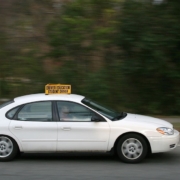NAPA Know How: Where To Teach Your Child To DriveNAPA Know How Blog
[ad_1]
You started out watching the calendar — now, you’re watching the clock. Time has flown and it’s suddenly your child’s turn to get behind the wheel. You’ve got one question: Where to teach your child to drive?
The Safest Option
An empty parking lot is the absolute best, safest place to begin. You want a place with no other moving or parked vehicles, with no pedestrians, with no unpredictable hazards. It’s flat, it’s open and you can see it all from any point. It’s perfect. Best of all, there are likely plenty of them a short distance from you — a large school parking lot on the weekend, an office park on the weekend, a big mall before it opens (or — as is the case in so many places, where some or all of the stores have closed for good). A parking lot is also a good place to teach young drivers about the safety features on the car like a back-up camera or parking sensors.
The Basics
That empty parking lot is a great place to get the basics of driving, stopping and turning down solid. There may even be crosswalks in the parking lot where you can practice coming to a stop before the lines and allowing pedestrians to cross. Once you’ve done that, you’re ready for the next step in where to teach your child to drive — some real-world training.
The best move at this point is a place you both know, where your child doesn’t have to process unfamiliar surroundings. The street where you live is probably a very good choice. Your child will know which house has a pet or child that might dart out into the street, where the curves and crosswalks are — which corner has the tree that blocks the view of the stop sign until the last minute — and you can reinforce that as part of the training. And that training should probably spread out over a few days before you move up the ladder of difficulty to busy secondary and primary surface streets, open highway and urban freeway driving.
Consider a Course
It’s important to take your time and do this right. The National Safety Council says half of all teen drivers will be involved in a car crash before graduating from high school. If you’re not sure you’re the best person to teach your child, there’s no shame in that. In fact, there are some excellent teen driver courses that you and your child could take part in. Check online to find the one closest to you and most appropriate for your family’s lifestyle. And if the car your child is learning in and will be driving needs maintenance or some safety equipment added, now’s the perfect time.
Check out all the safety parts available on NAPA Online or trust one of our 17,000 NAPA AutoCare locations for routine maintenance and repairs. For more information on where to teach a young driver how to drive, chat with a knowledgeable expert at your local NAPA AUTO PARTS store.
Photos courtesy of Mike Hagerty and Wikimedia Commons.












